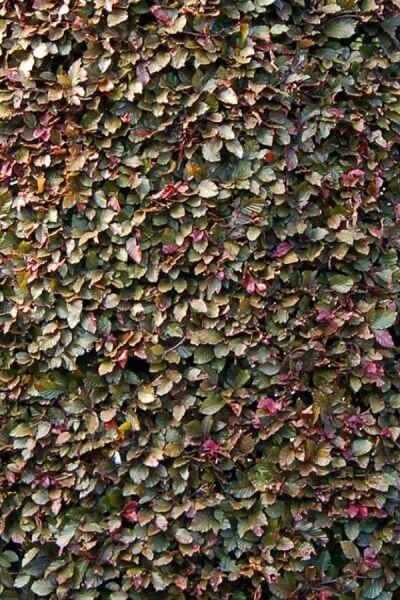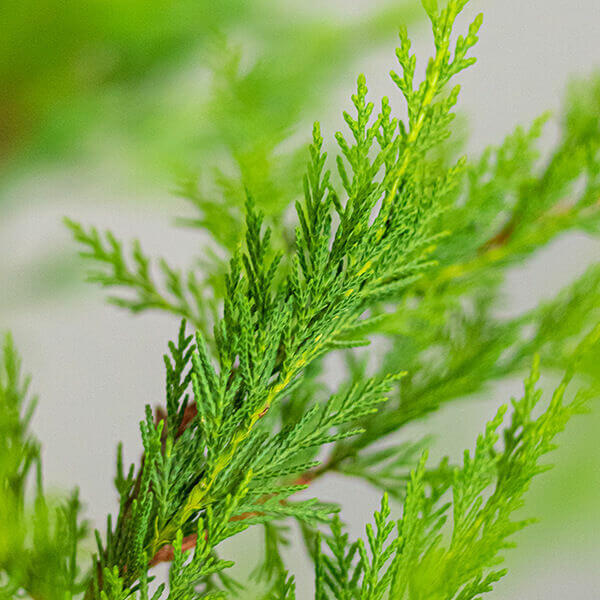Hedge Plants For Privacy Screens
Hedge Plants For Privacy Screens
Blog Article
Best Hedge Plants For Edging
Enhance your garden's appeal with rich hedge ranges such as Yew (Taxus), Thuja, Laurel, Photinia, and Bamboo, celebrated for their structural stability and environmental benefits.
Yew and Thuja supply evergreen protection and winter strength, while Laurel uses quick growth and broad, aromatic leaves.
Photinia adds seasonal appeal with its lively red foliage, and Bamboo lends a low-maintenance, tranquil ambiance.
These hedges improve air quality, lower noise, and create tranquil, personal areas.
Appropriate planting, spacing, and upkeep ensure energetic development and environmental consistency.
Check out how these lush varieties can elevate your garden's beauty and well-being.
Key Takeaways
Transform Your Garden With Lush Hedge Varieties
- Select Yew for its thick, evergreen development and unrivaled durability.
- Opt for Laurel for its fast development and broad leaves, making sure quick privacy.
- Choose Photinia for its vibrant seasonal foliage, which turns a striking dark red.
- Make use of Bamboo for a low-maintenance, winter-hardy hedge with aesthetic appeal.
- Space plants 2-3 per meter and prune regularly for optimal development and health.
Popular Hedge Plants
When changing a garden with lavish hedge ranges, it's important to consider popular hedge plants such as Yew, Thuja, Laurel, and Photinia due to their special attributes and benefits.
Yew (Taxus) is extremely esteemed for its longevity and thick, green development, making it a prime option for enduring landscapes.
Thuja is kept in mind for its evergreen foliage and robust winter strength.
Photinia adds seasonal vibrancy with red leaves that darken with time, producing dynamic visual appeal.
Laurel uses quick growth and fragrant, broad leaves, ideal for fast privacy.
In Addition, Bamboo is an exceptional option for atmosphere, providing a low-maintenance, winter-hardy alternative that enhances the garden's aesthetic with its elegant, swaying walking canes.
These choices accommodate a range of horticultural requirements and choices.
Benefits of Garden Hedges
Garden hedges use a multitude of advantages, making them an important addition to any landscape. These natural barriers are cost-efficient to implement and provide substantial wind security, boosting air flow and adding to sound reduction. The dense foliage of hedges like Thuja and Beech ensures privacy by blocking presence, developing a secluded and peaceful environment.
Hedges likewise play an important role in microclimate regulation, offering a stable environment that cultivates plant growth and decreases temperature variations. Their complex leaf structures filter pollutants, enhancing air quality and contributing to a healthier garden environment.
Furthermore, hedges stand out in noise decrease, absorbing and deflecting acoustic waves to lower ambient noise levels. This dual performance of providing both acoustic and visual privacy improves the overall harmony and aesthetic appeal of any garden.
Planting and Upkeep Tips
For a successful hedge, precise preparation of the planting location is crucial. Guarantee the soil has proper pH and drainage to support strong root advancement.
Area the plants appropriately for the picked species. Water the hedge often during its preliminary growth phase, changing as needed with seasonal modifications.
Carry out a methodical bug control and disease prevention method, utilizing organic or chemical treatments when essential. Regularly inspect for aphids, mites, and fungal infections.
Apply mulch to keep wetness and reduce weeds. Seasonal pruning promotes thick development and air circulation, important for plant health.
Following these guidelines will help you cultivate a dynamic, properly maintained hedge that enhances the beauty of your garden.
Spacing and Trimming Guidelines
Spacing and Trimming Guidelines
Appropriate spacing and trimming are essential for cultivating healthy, aesthetically appealing hedges. Sufficient spacing makes sure each plant gets adequate nutrients, light, and air flow.
Follow these standards for ideal hedge maintenance:
- Spacing: Position hedge plants 2-3 plants per meter to encourage robust growth.
- Pruning Methods: Regular pruning is important for preserving desired hedge height and shape. Trim new growth in summer and cut back older wood during winter.
- Seasonal Care: Adjust cutting schedules and approaches according to seasonal requirements to guarantee plant health.
- Hedge Height: Routinely monitor and trim to keep the wanted hedge height and accomplish uniform visual appeals.
Sticking to these steps will ensure your hedge grows, improving both the appeal and functionality of your garden.
Choosing the Right Hedge
Picking the Right Hedge
Choosing the appropriate hedge includes assessing factors such as fully grown height, foliage density, and environmental resilience. Effective hedge plant selection requires understanding each species' Additional hints development characteristics and site-specific adaptability.
For instance, Yew (Taxus) offers excellent durability and thick development, while Thuja is noteworthy for its winter resilience. Furthermore, considering maintenance requirements is important; fast-growing species like Laurel or Privet need regular trimming, whereas low-maintenance options like Bamboo or Ivy may be more suitable for those seeking very little maintenance.
Environmental aspects such as soil type, light availability, and wetness conditions ought to likewise guide the choice procedure. This careful technique ensures the selected hedges will thrive, offering both practical and visual benefits to the garden landscape.
Delivery and Planting Suggestions
To ensure your hedge plants prosper, they need to be delivered by specialized couriers and planted without delay upon arrival.
Follow these important steps for effective planting:
- Soil Preparation: Improve the soil with organic matter to improve drain and nutrient material.
- Planting Depth: Create a trench twice the width and equal to the depth of the root ball.
- Watering Strategies: Water completely after planting, keeping the soil consistently moist but not filled.
- Mulching: Use a layer of mulch to maintain wetness and suppress weeds.
Customer Support and Service
Provided the important function of prompt help in horticultural pursuits, our customer support team is available six days a week through telephone, email, and social media to provide professional recommendations and promptly deal with any issues. Their dedication to quick response times guarantees client fulfillment by dealing with questions connected to plant health, ideal planting techniques, and maintenance schedules.

Action Time
-------------------
Telephone
This detailed support group, reinforced by an excellent 9.3/ 10 consumer rating, highlights our commitment to boosting the gardening experience for every customer.
Regularly Asked Questions
For How Long Does It Take for Hedge Plants to Establish?
Hedge plants generally need one to three years to become completely established, with the specific duration varying by species and growing conditions.
Effective care during this critical period is necessary for robust growth. Constant watering, vigilant weed control, and suitable fertilizer application are critical in promoting strong root advancement.
For example, fast-growing species like Laurel may establish more quickly, while slower-growing varieties such as Yew may take longer. Thorough upkeep accelerates the establishment process, leading to thick and healthy hedges.
What Are the Best Hedge Plants for Privacy?
The concern of the finest hedge plants for personal privacy involves evaluating evergreen and deciduous options.
Evergreen hedges like Thuja, Laurel, and Cypress supply year-round protection, guaranteeing continuous personal privacy.
On the other hand, deciduous hedges such as Beech offer seasonal personal privacy, shedding leaves in chillier months.
Key upkeep pointers for privacy hedges include routine trimming, fertilizing in spring, and proper spacing-- typically 2 to 3 plants per meter.
In addition, consistent watering and thorough weed elimination are essential for promoting healthy, thick growth.
Can Hedge Plants Bring In Wildlife to My Garden?
Yes, hedge plants can draw in wildlife to your garden by providing necessary benefits like shelter, food, and nesting websites, consequently enhancing regional biodiversity. For instance, yew, holly, and laurel are exceptional for drawing in birds, while ivy supports a range of bugs.
However, it is essential to note that there are some disadvantages, such as increased maintenance to manage bugs and regular maintenance. Carefully choosing and keeping hedge varieties can help stabilize these benefits and disadvantages, eventually fostering a vibrant and sustainable ecosystem in your garden.
Are There Any Blooming Hedge Plants Available?
Yes, there are flowering hedge plants available that can boost the charm of your garden.
For instance, Elaeagnus, likewise understood as Olive Willow, produces fragrant white flowers in the fall, adding a touch of beauty.
Photinia, another popular choice, showcases dynamic red leaves that mature into a rich green, developing a vibrant visual effect throughout the seasons.
To guarantee these plants grow, it's vital to practice proper pruning methods and seasonal upkeep, such as trimming brand-new development in the summertime and cutting back in the winter.
These steps will help keep the health and aesthetic appeal of your flowering hedges.
How Do I Prevent Pests in My Hedge Plants?
To prevent bugs in hedge plants, use natural pest control approaches and preserve proper hedge care. Present useful insects like ladybugs, which prey on damaging insects, to create a balanced environment.
Frequently check your hedges for indications of invasion and immediately remove any afflicted parts to prevent the spread. Ensure the health of your hedges by using well balanced fertilizers and providing sufficient water.
Make use of mulching to keep soil wetness and correct spacing to lower plant tension and promote robust growth. These practices collectively help in minimizing bug problems and keeping a healthy hedge.
Conclusion
In essence, picking the ideal hedge ranges such as Yew, Thuja, and Laurel can change any garden into a serene sanctuary. These plants offer year-round plant, improve visual appeal, and offer useful advantages like sound decrease and wind defense.
Correct planting methods, accurate spacing, consistent watering, and seasonal trimming are vital for optimal development.
Dependable delivery services and skilled customer support ensure a smooth experience from purchase to planting, making it easier than ever to elevate your outdoor area.
Garden hedges provide a wide range of benefits, making them an important addition to any landscape. These natural barriers are economical to execute and provide substantial wind security, enhancing air blood circulation and contributing to noise decrease. The dense foliage of hedges like Thuja and Beech ensures personal privacy by obstructing presence, creating a tranquil and secluded environment.

Pruning Strategies: Routine pruning is necessary for keeping wanted hedge height and shape. Cut new growth in summer and cut back older wood throughout winter season.
Report this page